Most of us are probably familiar with southeast Asian fish sauce(s) of one sort or another. You might have a bottle of it in your pantry or refrigerator. You might even use it occasionally. There’s a whole world of fish sauces out there, and their origins go back more than two millennia, with fairly parallel tracks in Europe and Asia. Various fattier fish, like mackerel or anchovy are the most commonly used to make it, but also used, at least modern times for the big commercial brands, is the use of krill, which are tiny crustaceans (and one of the reasons that people who are allergic to shellfish sometimes, but not all times, have reactions to “fish” sauce). Because it’s cheap.
In Italy and surrounds, the Roman Empire used to produce garum or liquamen. Way back, these (as well as many Asian fish sauces) were made from fermenting the guts and trimmings of fish, the stuff that would otherwise go to waste. These days, most commonly, both are made from layering fresh anchovies with salt in some sort of fermentation container, and letting them ferment away, and then filtering the “drippings” that come out of the fish over time. Most commercial fish sauces are produced within 1-2 years of the start of the process, though matured ones do exist. The most famous of the European ones is the Neapolitan Colatura di alici, literally the “leakings of anchovies”, which has to be aged 3 years in terzigni, small chestnut wood barrels, before being filtered.
Comparing the two is, perhaps, unfair, as I don’t happen to have a bottle of aged, mature Asian fish sauce to do side by side with my colatura. But, let’s go with what I have, because it’s probably pretty much what you’re likely to have. The one I currently have is from China, though usually I have Vietnamese fish sauce. The color is clearly different. Colatura is lighter, and more amber in color, it’s also much clearer than the other, which is a darker, browner, and very slightly cloudy liquid. Both taste of fish, both taste of salt. I would say that the colatura is a mellower flavor, smoother, and a little saltier than the Chinese one which is sharper and stronger, but less salty.
In Campagna, where colatura di alici is from, while it is used for many dishes, much the way mashing up anchovies into the base of sauces is used in other parts of Italy, it is most famous in simple form, for a pasta dish, Spaghetti alla colatura di alici. For this dish, we have our spaghetti and colatura, along with lemon, garlic, dried pepperoncino chili flakes, black pepper, fresh breadcrumbs, and chopped parsley.
In a dry skillet (or the oven), toast the breadcrumbs over low heat until golden. Set aside.
Have your pot of salted water boiling, and at this point, go ahead and drop in your spaghetti.
In the same skillet toast the pepper and chilies to bring out their essence. Because the skillet is already hot, this will happen fast, no more than about 20-30 seconds. If you’re starting from a cold skillet, it will take a couple of minutes. Don’t let them burn!
Add olive oil and the garlic clove, smashed. About two minutes, just to flavor the oil, and lightly color the garlic.
Add a ladle of the starchy pasta water from the spaghetti – which is probably a bit over halfway cooked at this point. Remove the garlic clove.
As usual with our pastas, transfer the pasta when it’s a couple of minutes short of being al dente into the skillet, along with another ladle or two of the pasta water, to finish cooking it in the flavored emulsion.
About two minutes in, the pasta should be cooked, having absorbed all of the water, and the emulsion should be clinging to it.
Add, all together, some colatura – figure on about a teaspoon per portion, though some advocate less, no more than half a teaspoon. I like the flavor a bit stronger. At the same time, squeeze in the lemon juice, roughly an equal amount, a little of the zest from the lemon, and the chopped parsley.
Toss it all together well. And at last minute, when you’re ready to serve, toss in the breadcrumbs. Some people just sprinkle them on top, but most like them tossed through, they give little bits of crunch here and there in the pasta as you eat it.
And, serve.
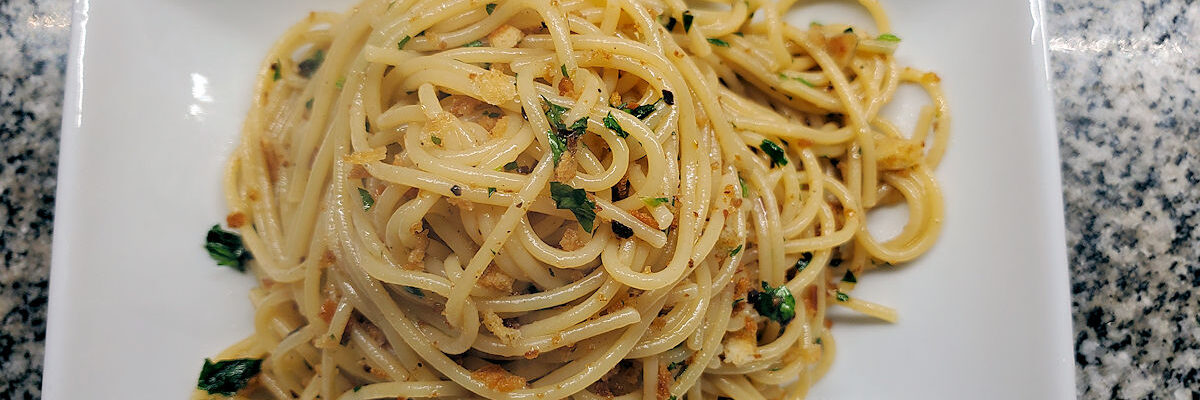
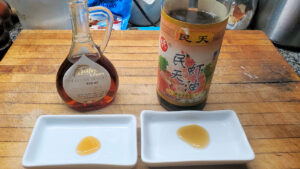
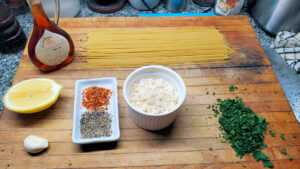
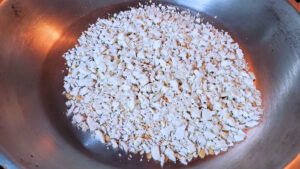
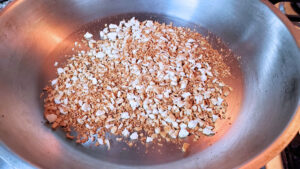
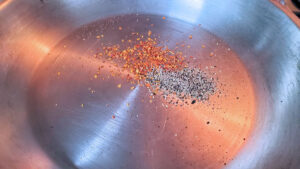
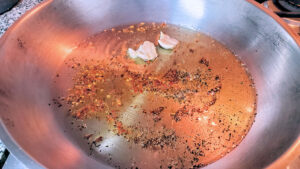
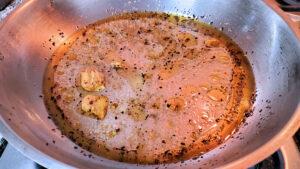
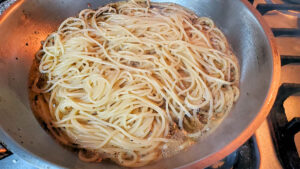
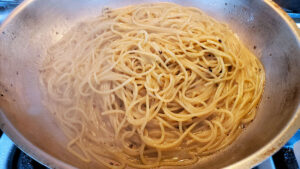
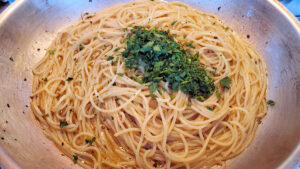
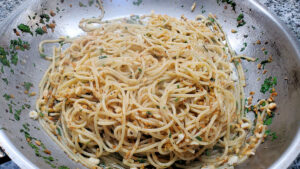
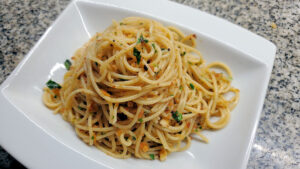
[…] and colatura di alici. The latter, Italian fish sauce, is a typically Neapolitan ingredient that I wrote about in detail awhile back for a pasta that featured […]